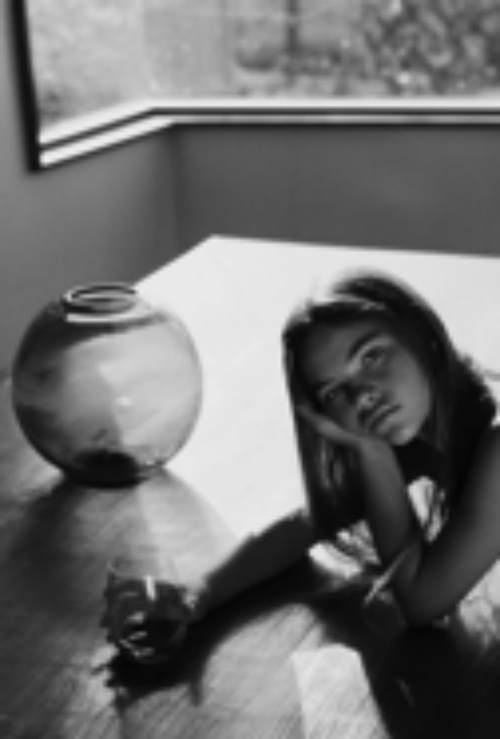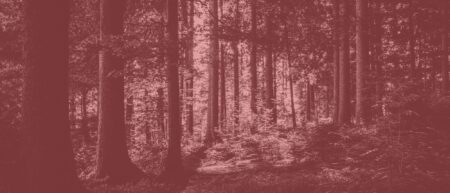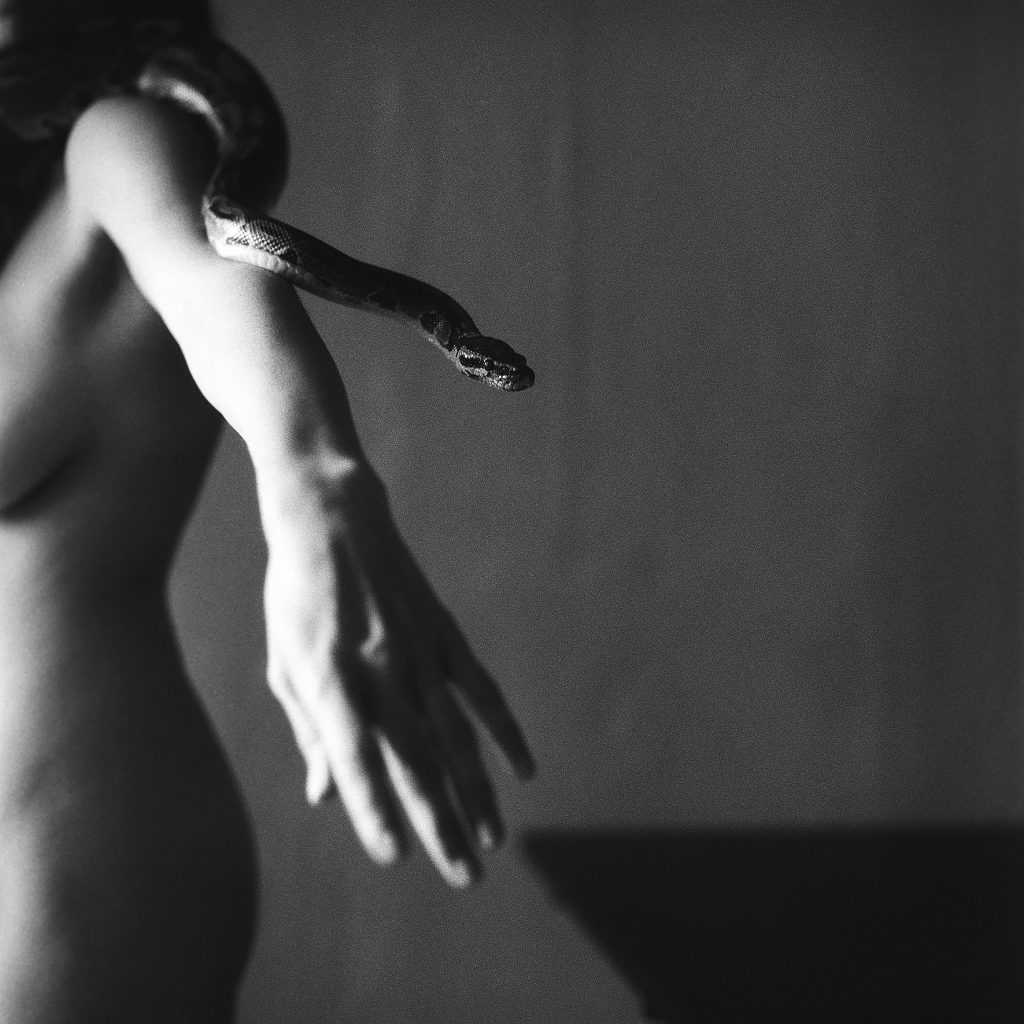
“There is no such thing as inaccuracy in a photograph. All photographs are accurate. None of them is the truth.”- American portrait photography icon, Richard Avedon
Natalie Obermaier is a photographer and portrait artist living in Venice, California. She has traveled the world capturing images in Turkey, Costa Rica, South Africa, Mexico, parts of Europe, and the United States. Recent Proximity contributor Matt Hamon connected with Obermaier to discuss her process and the degree that truth can really be captured in art.
How does your work relate to truth? What sort of truth do you try to convey?
Natalie Obermaier: I think I grew up pretty fast and I see kids as having this feral understanding of the world. They have it as soon as they make thoughts. Often, though, we can’t articulate this knowledge until well past the point when we’ve learned what is societally appropriate. We hide aspects of ourselves. We put on masks.
With kids there’s no filter. I wait for those moments of honesty to show, the ones that somehow recall the truths that we had as children, back before the “political correctness” of adulthood took over.

Tell us a little bit about your process with subjects. How do you coax that subtlety and nuance out of them?
NO: I try to be on their level while shooting. I tend to lie on the floor, climb trees, and put myself into the tightest possible corner, whatever it might take to get an angle that gives them a stage and their own voice. My directing style is very non-vocal and I often wonder if this allows my subjects a quiet place to be imaginative or if the uncertainty gives me a true glimpse into their minds.
If I follow the subject’s lead, and if I’m patient, I can stumble onto their innocence, stripped of artifice. But if I’m telling them what I want, they’ll either give it, or fight it.
Once in a while there’s a strange, inexplicable pose or situation in your portraits. The young girl with her leg up on the table comes to mind. What is this about? Is it important?
NO: Absolutely! Don’t they say “God is in the details”? I think children don’t even know when they are doing things like that. It happens in an instant and then it’s gone.

How do you know when a photograph is good or successful? What are the requisite qualities of a good portrait?
NO: Sometimes you don’t know. Part of my fascination with film is that you can always come back to it. You’d never throw away film, but I can be pretty flippant when editing my digital images. The digital “errors” instantly go in the trash, but the film mistakes could later reveal that magic that you didn’t even realize you were searching for.
Shooting film today is likely more time consuming, challenging, and expensive. Why are you so committed to film?
NO: There’s a period of blindness in film photography that has been eliminated in digital imaging. I’m talking about the period of time from when you click the button to the time when you see a proof sheet.
It’s incredibly important to my process, especially the work with children. They have all grown up with a million cameras everywhere and they have this expectation of seeing themselves any chance they want. I always allow a little bit of time for them to get the silly out of their system, as most kids want to buck the system by sticking out their tongue or making a ridiculous face. Once they realize that I’m not shooting when they are doing that, they stop. And when they can’t stop you every other photo to satisfy the narcissistic craving, they generally fall into a much more natural space. They turn off the performance and get back to being the “unmasked” geniuses that I flock to.

Do you see your work as collaborative? Is it about you, the subject, or something in between?
NO: I once had my portrait painted by an artist who sets up outside of the MOMA in NY. He has examples of his work on display and I was taken by their drama. I asked how long and he told me about two and a half hours, which worked with my schedule, so I sat down and tried for the next two hours to beam light and vibrancy from my eyes (I’ve been living in Venice a long time).
I ultimately got very sleepy and had to fight rather hard to stay awake. His table was set up above my eye level so I couldn’t see his progress at any point. People would stop and watch. It was quite surreal. At the end he ran off to a bodega to find a box so that I could get on the subway, and I got to take in the final portrait. I look like my mother on meth. I find it completely fascinating and it still hangs proudly on my wall. I will never forget how I thought I could zap some part of myself into him through my eyes. He saw what he saw. He painted in his style. I was the one with irrational expectations.
Is there an over-arching theme that has emerged from your work, a common thread, something beyond portraiture? I mean, what is your position or point of view on childhood, on women?
NO: I think ultimately I’m searching for beauty, truth, purity, strength. Empowered vulnerability, if that makes sense.
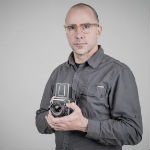 Matthew Hamon is a freelance portrait photographer who lives in rural Montana. His work has been featured on CNN, Outside Magazine, The Independent -UK, Lens Culture, LifeFramer, among other publications. Matthew was a finalist for the 2016 “Nera di Verzasca Award,” winner of the Diaframmi Chiusi Photography Prize, and IPHA 5. He is a 2016 Syngenta photography award recipient and first prize winner in PhotogrVphy’s 2016 grant.
Matthew Hamon is a freelance portrait photographer who lives in rural Montana. His work has been featured on CNN, Outside Magazine, The Independent -UK, Lens Culture, LifeFramer, among other publications. Matthew was a finalist for the 2016 “Nera di Verzasca Award,” winner of the Diaframmi Chiusi Photography Prize, and IPHA 5. He is a 2016 Syngenta photography award recipient and first prize winner in PhotogrVphy’s 2016 grant.
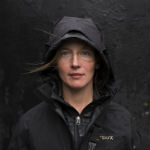 Natalie Obermaier was born in Annapolis, Maryland, in 1978. A magna cum laude graduate of Philadelphia’s Drexel University with a degree in Photography. Natalie’s prints have been have been widely published and exhibited throughout the United States. Natalie currently resides in Venice CA and when she isn’t lighting sets for Mark Seliger, David La Chapelle and other commercial photographers, she chips away at what it means to be an artist and photographer.
Natalie Obermaier was born in Annapolis, Maryland, in 1978. A magna cum laude graduate of Philadelphia’s Drexel University with a degree in Photography. Natalie’s prints have been have been widely published and exhibited throughout the United States. Natalie currently resides in Venice CA and when she isn’t lighting sets for Mark Seliger, David La Chapelle and other commercial photographers, she chips away at what it means to be an artist and photographer.
